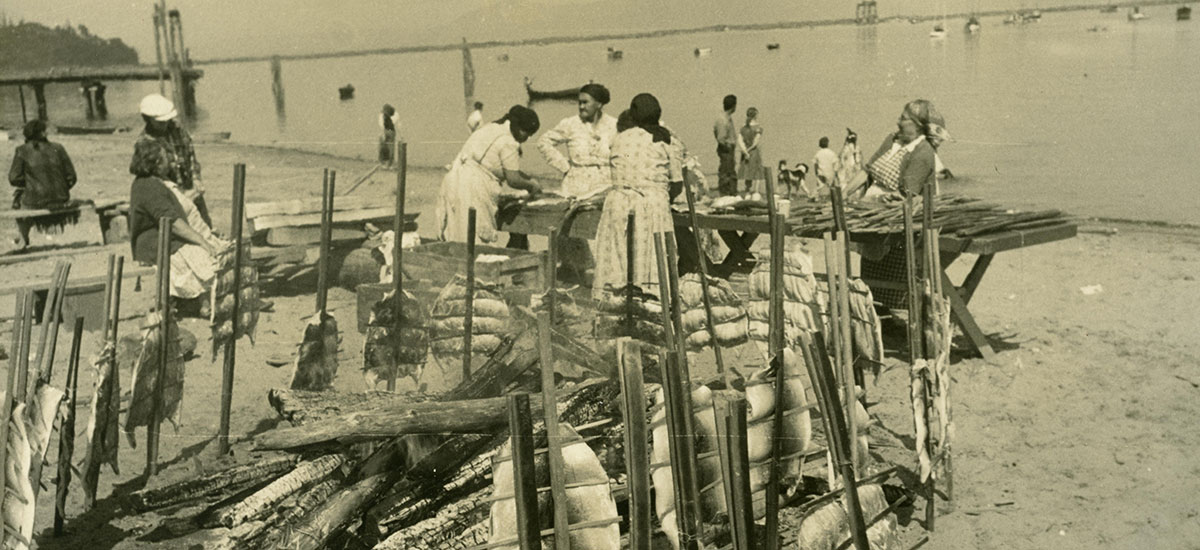
As viewed by indigenous peoples, traditional knowledge is a cultural resource belonging to or associated specifically with an individual or a group. It may not be common or public property to be shared outside the tribe. The disposition of information about tribes, their past and present lifeways, and cultural practices is of paramount importance in negotiating consultation and project protocols.
The traditional cultural significance of a historic property is derived from the role the property plays in a community's historically rooted beliefs, customs, and practices (Parker and King 1990). Some types of tribal information may be culturally privileged or otherwise controlled or regulated age or cultural norms. Hence sharing knowledge with non-tribal members may be contrary to tribal practices. According to guidelines of the National Register of Historic Places, "culture" is understood to mean the traditions, beliefs, practices, lifeways, arts, crafts, and social institutions of any community (Parker and King 1990). The sharing of knowledge of any of these types of information may be restricted to within the tribe. Tribal culture, in general terms, is uniquely and inextricably tied to place; any of the cultural components listed above may also imbue a place with special meaning. Examples of such locations include:
- A location associated with the traditional beliefs of a Native American group about its origins or cultural history, or the nature of the world.
- A location where Native American religious practitioners have historically gone, and are known or thought to go today, to perform ceremonial activities in accordance with traditional cultural rules of practice.
- A location where a community has traditionally carried out economic, artistic, or other cultural practices important in maintaining its historic identity.
- A location that is intentionally avoided by an indigenous community, for example, because of its association with certain traditions, events, or revered beings/powers.
Traditional Knowledge (TK) may be similarly privileged or otherwise controlled or regulated by cultural constraints within a tribe. Although the term traditional ecological knowledge is commonly used (USFS 2011, USFWS 2014, Anderson 2015), we use the term traditional knowledge synonymously, to avoid reinforcing the non-existent divide between cultural and natural resources. The non-native definition of TK is “a cumulative body of knowledge, practice and belief evolving by adaptive processes and handed down through generations by cultural transmission, about the relationship of living beings (including humans) with one another and with their environment” (USFS 2011:1). In general, indigenous ways of knowing about the environment may differ fundamentally from those of most non-native or industrialized societies. The non-native paradigm places humans at the top of a hierarchy of nature, implying that humans are separate from the environment. This can lead to the treatment of other living things as resources to be used to meet human needs, wants, and desires. Generally, the indigenous paradigm regards humans as an integral and inseparable part of nature, with a continuous duty of care for its sustainability. Indeed, Gisele Martin of Tla-o-qui-aht First Nation in Canada goes as far as portraying English as an invasive language, with words such as “resources,” “stewardship,” and “management” that do not have a translation into Tla-o-qui-aht, one of many indigenous languages. Martin explains that, “our language has no word for ‘environment’; the closest is 'tiičmis', a word meaning ‘force that keeps us alive’” (Martin 2015).
Each tribe is unique, influenced by its local environment, as is its traditional knowledge. Agencies’ scientific and resource management responsibilities can be greatly enriched through the incorporation of TK. At a tribe’s discretion, TK may be shared through the consultation process, as well as through less formal collaboration. These interactions can help agency staff identify tribal individuals who hold TK, as well as the opportunities to ask whether and how TK may be shared.
A review of U.S. and international intellectual property law finds that although binding and enforceable, such laws “usually are not applicable to traditional knowledge given its intergenerational, communal nature” (Brewer and Kronk Warner 2015:41). Furthermore, other sources of non-binding law (such as the internationally recognized right to self-determination) may protect TK, but are not enforceable in the U.S.
Culturally sensitive information may sometimes be publicly available. However, respect for the nature of this information must be demonstrated when consulting with tribes. It will not always be possible to know in advance what type of information is culturally sensitive, and tribes will not necessarily be willing or permitted to speak of such information to agency representatives. While this poses challenges, awareness that there is likely to be culturally sensitive information, and respect for the privileged nature of this information, will help foster productive relationships with tribes (NOAA 2013).
A multiagency Memorandum of Understanding “Regarding Interagency Coordination and Collaboration for the Protection of Indian Sacred Sites” calls for the signatory agencies to develop “recommendations for addressing challenges regarding confidentiality” (Sacred Sites MOU 2012:2). “One way to address confidentiality concerns is for contracts [or agreements] with tribes to treat documentation generated by a tribe as its intellectual property, in recognition, as provided in Article 31 of the Declaration [UNDRIP], that tribes ‘have the right to maintain, control, protect and develop their intellectual property over [their] cultural heritage, traditional knowledge and traditional cultural expressions’” (Suagee and Bungart 2013:5). In developing the TCL project, BOEM and NOAA deliberately stipulated in all fundamental agreement documents and contracts that control over cultural information would remain with individual tribal partners. The project team incorporated confidentiality language into both the Interagency Agreement and the contracts.

